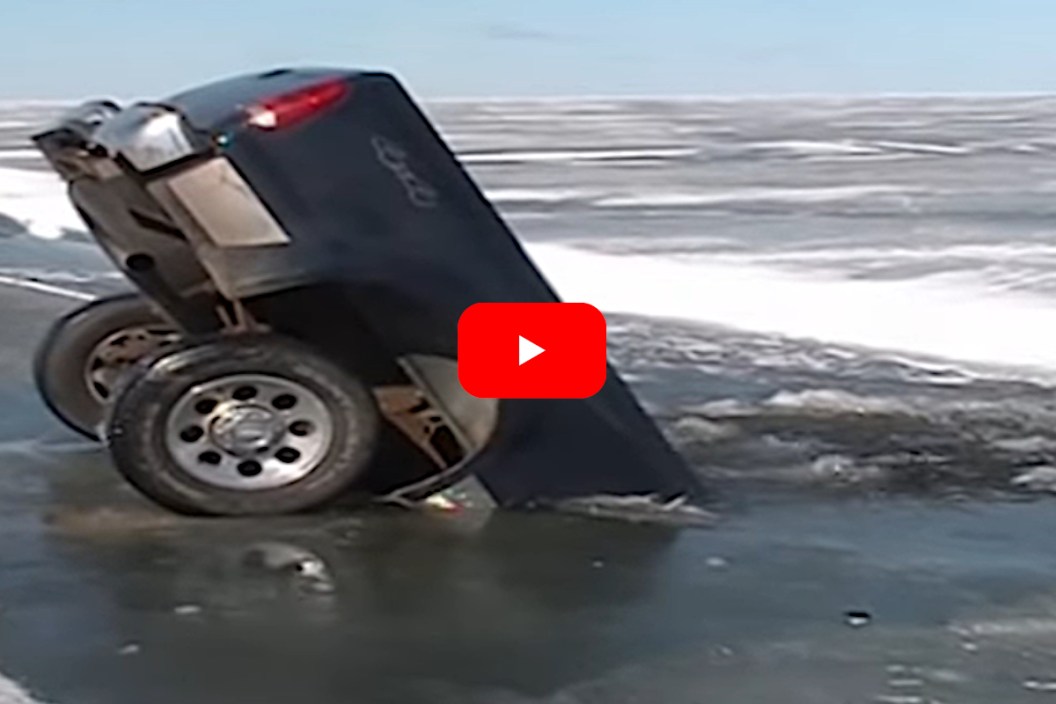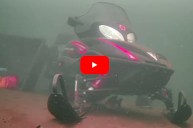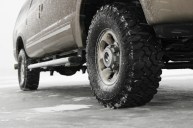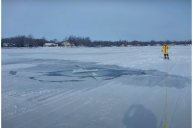This truck recovery effort results in total disaster.
We are just now starting to get to prime ice fishing season as some of the larger lakes in states like Wisconsin and Minnesota are already starting to freeze over. Ice conditions aren't ideal in many locations yet, but that's not going to stop some determined anglers from heading out on the frozen lakes. Some of them may learn a hard lesson when they find out that ice wasn't as thick as they thought.
Today's video is a lesson on ice thickness, ice safety and a little bit of common sense when heading out for the first time this winter. Shot in 2011 on Minnesota's Lake of the Woods, some driver has nose-dived his pickup truck into a patch of thin ice.
The truck is currently stuck there in open water. It's not quite gone yet, so a group decides to try and save it. Things don't exactly go swimmingly. This is a difficult video to watch as attempt after attempt fails horribly. Fortunately, no one is hurt except the truck. Warning that there is some harsh language in the video.
https://www.youtube.com/watch?v=28hHtvd68lc
According to the video's description, the truck went down in 37 feet of water and cost the owner $22,000 to retrieve come the spring. Of course, by that time, the vehicle is going to be toast. The video's uploader states he was simply filming and his suggestions to have them trying to pull the vehicle out slowly fell on deaf ears.
We won't claim to be experts on how to pull a vehicle out of the ice like this. However, this is a good time to rehash some basic ice safety rules before you head out on any body of water this time of year. For one, most state DNR agencies will recommend a minimum ice thickness of four inches for fishing purposes. Check the thickness of the ice closer to shore with a tape measure and ice chisel before you head further out.
Most experts recommend at least five inches before you drive a snowmobile or ATV out on it and most recommend at least eight inches of ice for a small pickup. This appeared to be a larger truck, which could have used 12-15 inches or more just to be safe. Clear ice, blue ice and white ice are usually considered to be the safest to travel on, while grey ice is usually thinner and more dangerous. Personally, we recommend leaving the vehicles off the ice and simply walking to your spot. It makes for fewer chances of breaking through and an overall safer experience while angling this winter. Plus, you avoid being the butt of the jokes at the local bait shop for being the guy or gal who watched their vehicle sink to the bottom of the lake last year!
For more outdoor content from Travis Smola, be sure to follow him on Twitter and check out his Geocaching and Outdoors with Travis YouTube channels.
NEXT: THE AXIS DEER AND HOW THEY'RE IMPACTING PARTS OF THE UNITED STATES
WATCH





